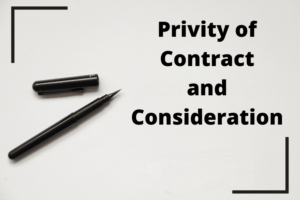
EFFECTIVE APPROACHES TO ATTEMPT LENGTHY PASSAGES: CLAT
Long passages are an important part of the Common Law Admission Test (CLAT) examination, and mastering comprehension sections is the only way to ace the CLAT. Students must complete reading passages comprising 400-450 words in all parts other than the section of Quantitative Techniques within the allotted time constraint. Consequently, you must acquire the necessary skills if you want to finish the paper on time.
Your ability to read does not develop overnight. You should instead consistently practice and pay attention. Additionally, you must comprehend the fact that quick reading does not merely include reading loudly without understanding. You must comprehend the passage’s context in order to give adequate answers to the questions.
Tips to Adapt: Lengthy Passages
Understand the Question by Reading once
- To effectively answer lengthy paragraphs by reading in once on the CLAT exam, you must speed up your reading. Make it a habit to routinely read newspapers, periodicals, books, and other sources of information.
- Your comprehension and efficiency will increase as you read more.
- It is essential to understand the passage’s basic ideas and identify the category to which it belongs.
- This is beneficial since it makes it simple to rule out answers that do not pertain to the passage’s subject matter as you proceed through the answers.
Lay Focus on the Structure of the Passage
- A full understanding of the passage is required to answer the questions based on the reading passages. As a result, continually pay heed to how certain words influence a passage’s pace.
- Furthermore, if you have a fundamental understanding of the structure of the passage, you can effectively respond to the questions asked.
Concentrate on the Tone of the Passage
- Focus on certain elements like the language, tone, and terminology utilized in lengthy passages. This will increase your understanding and help you get more comfortable with the unique characteristics of lengthy paragraphs.
- Find descriptive terms by browsing.
- Discoverseveral tones such asOpinionated, Optimistic, Witty, Introspective, etc. Experts from institutes for CLAT Coaching disclosed that a number of the most frequent ones used when asking questions are these. Authors occasionally employ neutral or a combination of tones. Study the passage’s tones by doing so.
Concentrate on Practicing such Passages
- The key to raising your test scores is practice.
- Regular practice of reading comprehension posted on different websites providing CLAT Coaching will improve your vocabulary, accuracy, and all other skills.
- While focusing on comprehension, keep an eye on the time as well.
- Pay attention to details like the passage’s lexicon and tone style.
- Read with complete focus as well as understanding at the same time.
- Do not draw assumptions. Even if you have an extensive understanding of the subject matter covered in the passage, you shouldn’t include it in your responses. Just stick with what is asked in the comprehension.
Enhance your Speed in Reading
- Being ready to read comprehension under the allocated time is essential for the CLAT.
- Monitor the amount of time it takes you to finish each reading comprehension.
- A passage of moderate complexity should be finished in 6-7 minutes.
- While practicing, try out several passage styles, including brief, lengthy, descriptive, informative, etc. and get ready to brush up on subjects that you are unfamiliar with.
Make use of a Pen while Studying
- Reading comprehension should not be treated as a book.
- You should be able to go through the passage with cooperation between your hands, eyes, and brain.
- Make it a practice to highlight important terms that you find. You won’t have to read pointless material while looking for the answer.
Concentrate on the Basic Recommended Books
- Start reading recommended books on subjects like politics, general knowledge, current happenings, and legal issues.
- Books written for students in 12th grade can be an excellent starting point because they provide thorough knowledge and cover an extensive spectrum of relevant concepts.
Practice Passages by Setting a Timer
- Set a timer to monitor your progress while you practice the previous year’s questions with lengthy passages.
- You can mostly go through the practice papers uploaded on the websites of different institutes for CLAT Coaching.
- Each reading comprehension piece should have a reasonable time limit, and you should try to stick to it.
- This can help you plan your time efficiently during the actual exam by giving you an estimate of the amount of time it will take you to read and grasp the passage.
The lengthy reading comprehension questions on the CLAT exam differ from those that are covered in law schools due to the structure of the test. The basic context of the paragraph must be understood by the students or aspirants of CLAT.
Therefore, you must keep in mind that understanding the lengthy sections for the CLAT takes regular practice and a determined strategy. You will be fully prepared to handle any long passage that comes to you in the CLAT examination by adhering to these crucial recommendations.



